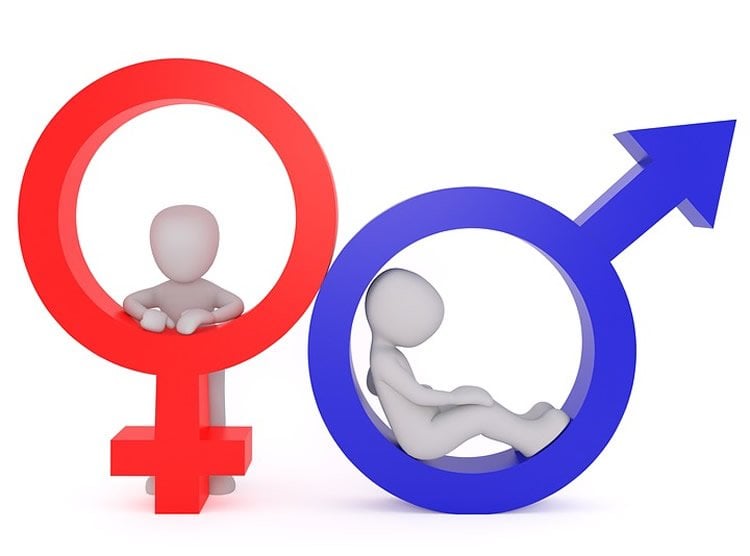Summary: Exposure to allergic inflammation, while in utero, increased mast cell and microglia activation, leading to masculinization of dendritic spine density in the preoptic area of females. During adulthood, females exposed to allergic inflammation showed an increase in more masculine behaviors.
Source: University of Maryland School of Medicine
Researchers at the University of Maryland School of Medicine and colleagues at Ohio State University have discovered that allergic reactions trigger changes in brain behavior development in unborn males and females. This latest brain development discovery will ultimately help researchers better understand how neurological conditions can differ between men and women.
It is the first study to assess the response of a type of immune cell called a mast cell, linked to allergic responses, to determine if these cells play a role in sexual behavior development.
“Many mental health and neurological disorders show a sex bias in prevalence, this latest research shows that inflammatory events, like allergic reactions, early in life may influence males and females differently due to underlying sex differences in the neuroimmune system,” said Margaret McCarthy, PhD, Professor of Pharmacology and Chair of the Department of Pharmacology, whose lab conducted the research that was initiated by Dr. Katherine Lenz, an Assistant Professor in the Department of Psychology at Ohio State University
These findings, which were published in Scientific Reports, illustrate that immune cells are involved in the process of brain sexual differentiation and that prenatal allergic inflammation can impact this crucial process in both sexes. This finding is another discovery that will ultimately help researchers understand behavioral development differences between males and females.
How Allergic Reactions Impact Sexual Behavior
Researchers tested the sexual differentiation in rats that were exposed to an allergic reaction while still in utero. They induced an allergic reaction to egg whites in pregnant rats, and the results of the study showed the allergic reaction impacted behavior changes in the offspring. Male rats showed less male sexual behavior as adults and adult females behaved more like male rates.

The research tracked mast cells, which are known for their role in allergic responses. Researchers sought to determine if exposure to an allergic response of the pregnant female in utero would alter the sexual differentiation of the offspring and result in sociosexual behavior in later life.
“This research shows that early life allergic events may contribute to natural variations in both male and female sexual behavior, potentially via underlying effects on brain-resident mast cells,” said Dr. McCarthy
Sexual differentiation takes place in the early life process and it is directed by sex chromosomes, hormones, and early life experiences. What this research showed is that immune cells residing in the brain such as microglia and mast cells, are more numerous in the male than female rat brains, and these cells play a critical role in brain development.
Source:
University of Maryland School of Medicine
Media Contacts:
Joanne Morrison – University of Maryland School of Medicine
Image Source:
The image is in the public domain.
Original Research: Open access
“Prenatal Allergen Exposure Perturbs Sexual Differentiation and Programs Lifelong Changes in Adult Social and Sexual Behavior”
Kathryn M. Lenz, Lindsay A. Pickett, Christopher L. Wright, Anabel Galan & Margaret M. McCarthy. Scientific Reports volume 9, Article number: 4837 (2019) doi:10.1038/s41598-019-41258-2
Abstract
Prenatal Allergen Exposure Perturbs Sexual Differentiation and Programs Lifelong Changes in Adult Social and Sexual Behavior
Sexual differentiation is the early life process by which the brain is prepared for male or female typical behaviors, and is directed by sex chromosomes, hormones and early life experiences. We have recently found that innate immune cells residing in the brain, including microglia and mast cells, are more numerous in the male than female rat brain. Neuroimmune cells are also key participants in the sexual differentiation process, specifically organizing the synaptic development of the preoptic area and leading to male-typical sexual behavior in adulthood. Mast cells are known for their roles in allergic responses, thus in this study we sought to determine if exposure to an allergic response of the pregnant female in utero would alter the sexual differentiation of the preoptic area of offspring and resulting sociosexual behavior in later life. Pregnant rats were sensitized to ovalbumin (OVA), bred, and challenged intranasally with OVA on gestational day 15, which produced robust allergic inflammation, as measured by elevated immunoglobulin E. Offspring of these challenged mother rats were assessed relative to control rats in the early neonatal period for mast cell and microglia activation within their brains, downstream dendritic spine patterning on POA neurons, or grown to adulthood to assess behavior and dendritic spines. In utero exposure to allergic inflammation increased mast cell and microglia activation in the neonatal brain, and led to masculinization of dendritic spine density in the female POA. In adulthood, OVA-exposed females showed an increase in male-typical mounting behavior relative to control females. In contrast, OVA-exposed males showed evidence of dysmasculinization, including reduced microglia activation, reduced neonatal dendritic spine density, decreased male-typical copulatory behavior, and decreased olfactory preference for female-typical cues. Together these studies show that early life allergic events may contribute to natural variations in both male and female sexual behavior, potentially via underlying effects on brain-resident mast cells.






